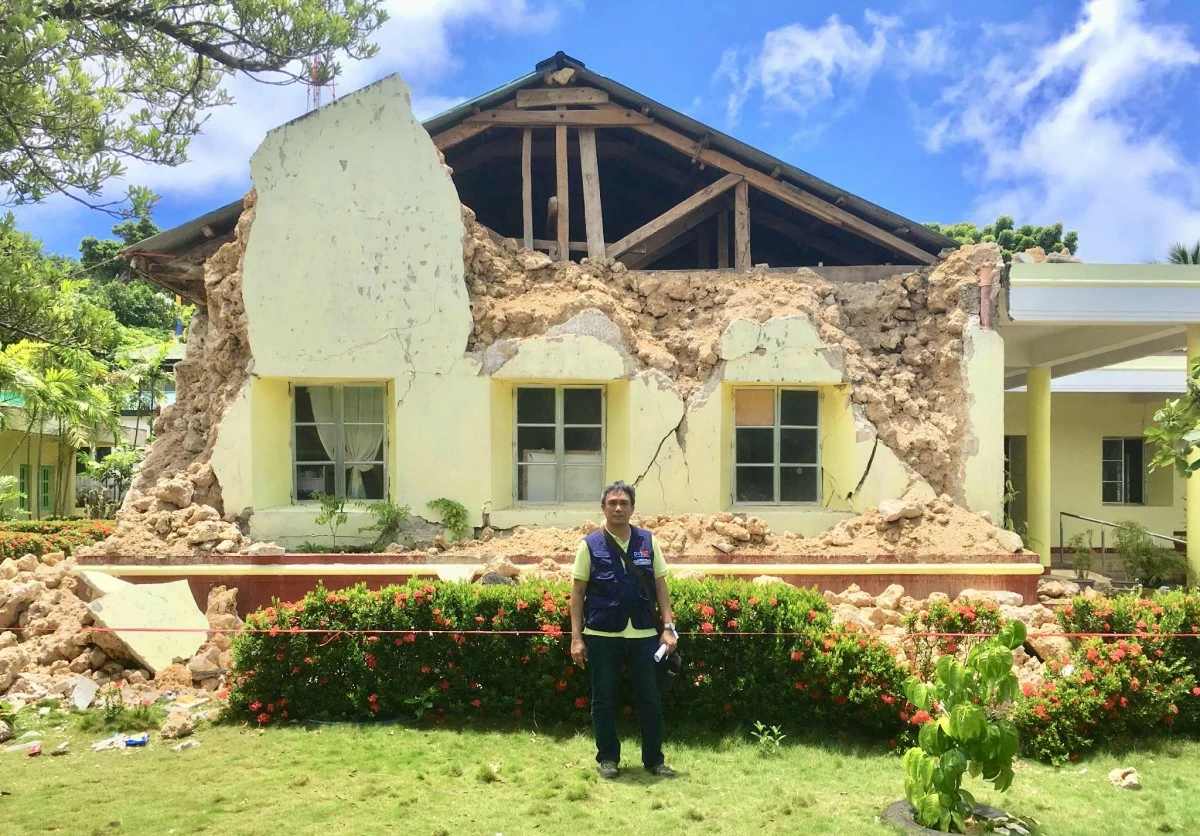
Earthquakes claim not just lives but also centuries of built heritage
By Joel Vivero Rico, FPIA, UAP As midnight approached on Sept. 30, a powerful earthquake jolted the Philippines. Measuring 6.9 in magnitude and striking at a shallow depth of just five kilometers, the tremor was recorded by the Philippine Institute of Volcanology and Seismology (PHIVOLCS). It violently rocked the northern parts of Cebu, as well as areas of Iloilo and Bacolod. Preliminary estimates indicate that approximately 37,000 individuals were affected, primarily in Region VII, with Bogo City, Medellin, and San Remigio among the hardest hit. As aftershocks continue to ripple across the region, that number is expected to rise. One of the most immediate and visually striking consequences of the quake was the damage sustained by the heritage structures, the most vulnerable—particularly Spanish-era churches and ancestral houses, commonly built using large adobe (volcanic tuff) blocks, and aged timber. Among the severely affected were the Shrine of Santa Rosa de Lima and the Daangbantayan Church in Bantayan. Damage also extended to civic buildings from the American colonial and post-war periods, as well as to some relatively modern constructions. Destructive earthquakes in history As an architectural historian, I cannot help but recall some of the destructive seismic events that have altered both the physical and cultural landscape of the Philippines. The archipelago\'s vulnerability to earthquakes has repeatedly claimed not just lives but also centuries of built heritage. The 1863 Luzon earthquake stands as one of the most catastrophic in our history. It caused the total collapse of the original Santo Domingo Church, Ayuntamiento de Manila, and Palacio del Gobernador in Intramuros. That disaster forced the Spanish colonial government to relocate the seat of the gobernador heneral from Intramuros to Malacañang Palace in the San Miguel District—a significant shift in both governance and urban development. It also led to a reconsideration of construction materials, prompting the wider use of ladrilyo, tisa (tiles), and bricks, which were viewed as more seismically resilient than adobe. In 1880, another powerful earthquake struck Manila, toppling the left bell towers of San Agustin Church and the Manila Cathedral. Fast forward to 1968: A magnitude 7.3 earthquake centered in Casiguran, Aurora, caused the tragic collapse of the Ruby Tower in Manila, claiming hundreds of lives. That incident finally compelled the government, through the Department of Public Works and Highways, to draft RA 6541, the earlier version of the National Building Code. The 1990 Luzon earthquake, with a magnitude of 7.8, devastated the cities of Baguio, Dagupan, and Cabanatuan. The Baguio Hyatt Terrace Hotel collapsed entirely, sparking days-long rescue operations. In 2013, a 7.2-magnitude earthquake shook Central Visayas—particularly Bohol and Siquijor—damaging or destroying nearly every Spanish-era church in the region, and in 2019, a 4.8 magnitude earthquake in Batanes that collapsed the 19th century Itbayat Church and some traditionally-constructed schools. These historical parallels reveal a troubling but consistent pattern: Heritage structures, particularly those from the Spanish colonial era, remain dangerously vulnerable to seismic activity. Ancient structural composition Many of these historical buildings were constructed using large adobe blocks stacked with primitive joinery or adhesion methods and little to no internal reinforcement. Their sheer mass—often with walls over a meter thick—was once considered their strength. But age, environmental exposure, and cumulative seismic activity have eroded that advantage. Church facades are particularly vulnerable. Their height, along with numerous ornamental windows and door openings, weakens their stability during earthquakes. Timber trusses, many over a century old, have also deteriorated—often compromised by termites and rot. These are typically tasked with supporting heavy clay tile roofs, further increasing structural stress. Additionally, a growing concern is the phenomenon of soil liquefaction under many heritage sites. Decades of groundwater saturation and shifting have left the subsurface increasingly unstable, undermining the already fragile foundations of these historic buildings. Unsolicited solutions Given the chronic vulnerability of our built heritage, immediate and strategic interventions are essential. Foremost among these is the urgent need to conduct comprehensive soil testing and geohazard assessments at all heritage sites. Understanding subsoil conditions enables the implementation of foundation strengthening techniques, thereby enhancing resilience against future seismic events. Equally critical is the replacement of aging timber roof trusses with lighter, more durable steel alternatives. These steel trusses can be designed to replicate the appearance of the original timber systems, preserving aesthetic integrity while significantly reducing overall roof load. A lighter roof structure not only improves seismic performance but also extends the lifespan of the building. Additionally, modern new constructions or additions near heritage structures must be built with proper Seismic Gaps—intentional spacing that allows independent movement and prevents the catastrophic collision of old and new structures during earthquakes. In recognition of this need, the National Commission for Culture and the Arts (NCCA), as the country’s leading cultural agency, has taken the lead in coordinating assessments and preparing for the imminent repair of vulnerable heritage structures. Supporting the NCCA in this vital effort are the National Historical Commission of the Philippines (NHCP) and the National Museum of the Philippines (NM), along with private sectors such as the Philippine Institute of Architects (PIA), United Architects of the Philippines (UAP), Heritage Conservation Society (HCS), ICOMOS Philippines, and other local heritage advocate groups. This collaborative initiative exemplifies a modern-day Bayanihan—a united community response to preserving the nation’s cultural legacy. (Joel Vivero Rico, FPIA, UAP is an award-winning conservation architect, author, historian, heritage consultant, archaeologist, and history professor at De La Salle-College of Saint Benilde (DLS-CSB) Design and Arts since 2011. He was recently named the PRC Outstanding Professional Architect for 2025. )